Awakening Varanasi
India
In the bustling early morning of the sacred site, there was a sacred flow of time.
Hear the local sound

The Ganges River flows endlessly through the scorched earth, a lifeline in the heart of India. It quenches thirst, nourishes fields, feeds livestock, and sustains entire communities. For millennia, people have gathered along its banks to drink from its flow, wash their clothes, and cleanse their sins—both physical and spiritual. In return, they offer deep and abiding gratitude for the river’s blessings.
From this gratitude, faith was born. The Ganges came to be seen not merely as water, but as a goddess—Ganga Ma—a divine force that purifies and redeems. Kingdoms have risen and fallen, cities built and destroyed, yet the reverence for the river has never faded. Generation after generation, people have remained by her side, tethered to her sacred current.
Of all the holy places along the Ganges, Varanasi stands as the spiritual heart of Hinduism. It is believed that to die here, in this ancient city of light, is to break the cycle of rebirth and achieve moksha, liberation from the endless wheel of life and death. Pilgrims arrive from across India and the world, their journeys ending—or perhaps beginning—on these sacred ghats.
The stone steps of the ghats stretch for miles along the riverbank, each one alive with ritual. Morning and night, the air is thick with the scent of incense and the sound of chanting. Some ghats are for prayer, others for washing, and some, like Manikarnika, are for cremation. Here, flames burn day and night, offering final release to the departed.
Those nearing the end of their lives often move to Varanasi, hoping to breathe their last beside the holy river. Not all are cremated; the bodies of young children, pregnant women, sadhus, and those who died from snakebite or leprosy may instead be set afloat, wrapped in cloth, surrendered to the Ganges. The sight of these bodies, pecked at by birds or drifting silently in the current, is a stark reminder: life and death are inseparable, and the cycle continues.
At dawn, the most sacred hour, pilgrims descend into the water, facing the rising sun. They chant softly, palms pressed together, their silhouettes glowing against the golden light. The prayers are the same ones whispered for thousands of years—pleas for peace, for freedom from suffering, for a final liberation.
And so, once again, as the first light of day brushes the rooftops and temple spires, Varanasi awakens. The river shimmers. Bells ring. Smoke rises. Life begins anew, as it always has, by the side of the eternal Ganges.
From this gratitude, faith was born. The Ganges came to be seen not merely as water, but as a goddess—Ganga Ma—a divine force that purifies and redeems. Kingdoms have risen and fallen, cities built and destroyed, yet the reverence for the river has never faded. Generation after generation, people have remained by her side, tethered to her sacred current.
Of all the holy places along the Ganges, Varanasi stands as the spiritual heart of Hinduism. It is believed that to die here, in this ancient city of light, is to break the cycle of rebirth and achieve moksha, liberation from the endless wheel of life and death. Pilgrims arrive from across India and the world, their journeys ending—or perhaps beginning—on these sacred ghats.
The stone steps of the ghats stretch for miles along the riverbank, each one alive with ritual. Morning and night, the air is thick with the scent of incense and the sound of chanting. Some ghats are for prayer, others for washing, and some, like Manikarnika, are for cremation. Here, flames burn day and night, offering final release to the departed.
Those nearing the end of their lives often move to Varanasi, hoping to breathe their last beside the holy river. Not all are cremated; the bodies of young children, pregnant women, sadhus, and those who died from snakebite or leprosy may instead be set afloat, wrapped in cloth, surrendered to the Ganges. The sight of these bodies, pecked at by birds or drifting silently in the current, is a stark reminder: life and death are inseparable, and the cycle continues.
At dawn, the most sacred hour, pilgrims descend into the water, facing the rising sun. They chant softly, palms pressed together, their silhouettes glowing against the golden light. The prayers are the same ones whispered for thousands of years—pleas for peace, for freedom from suffering, for a final liberation.
And so, once again, as the first light of day brushes the rooftops and temple spires, Varanasi awakens. The river shimmers. Bells ring. Smoke rises. Life begins anew, as it always has, by the side of the eternal Ganges.
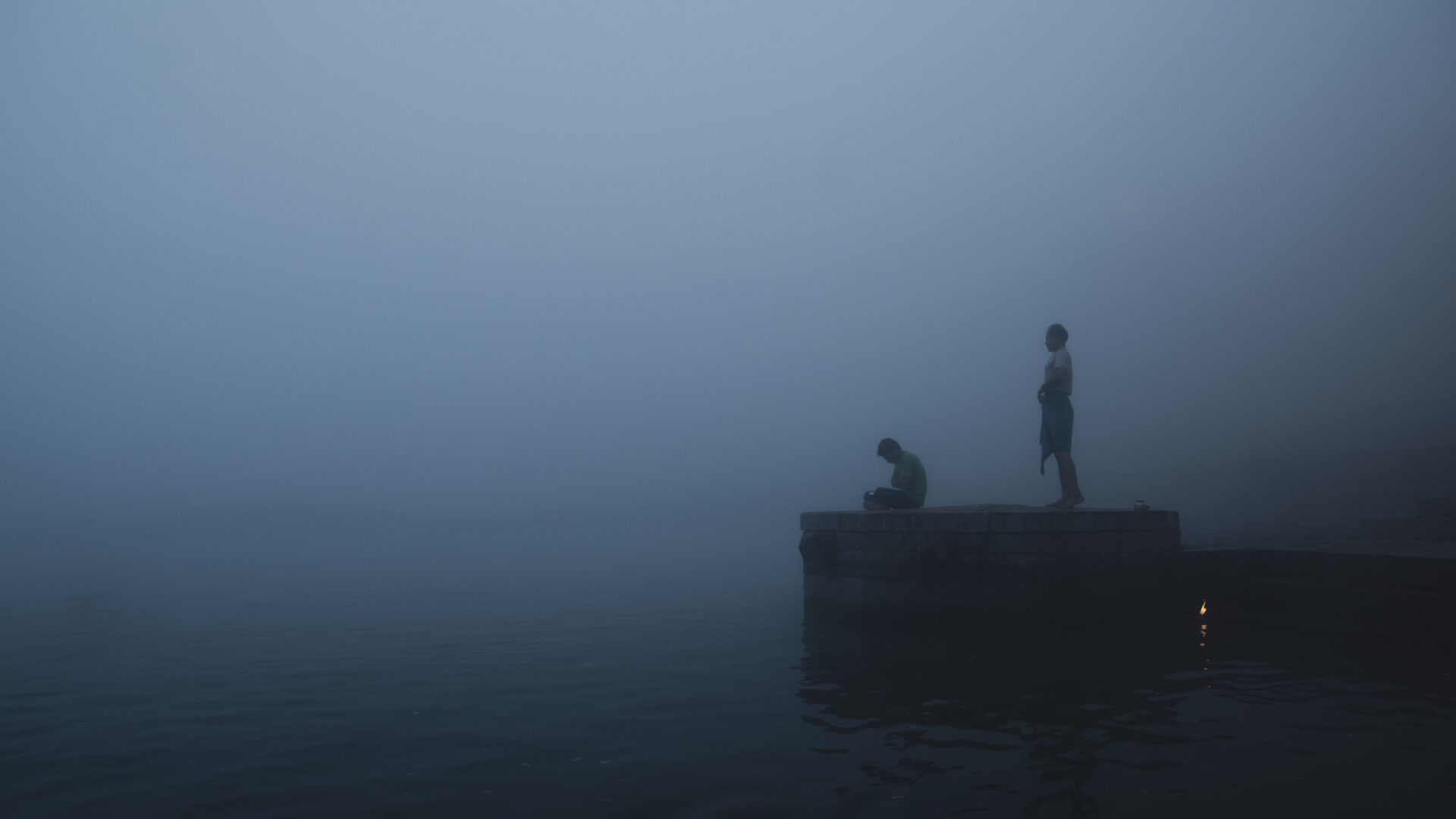
Without wind, without waves.
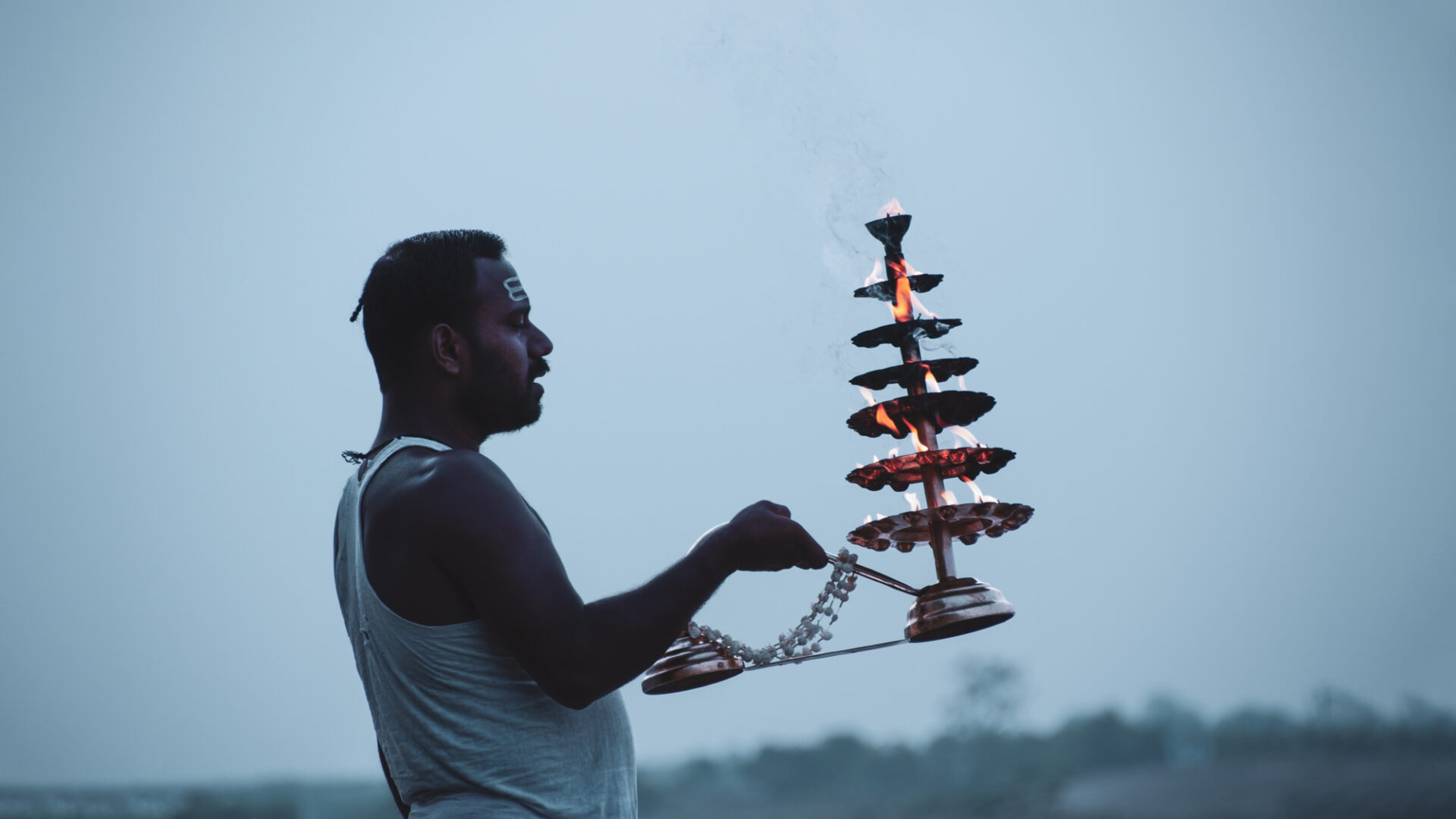
A quiet morning where even the sound of walking barefoot on cobblestones seems audible.
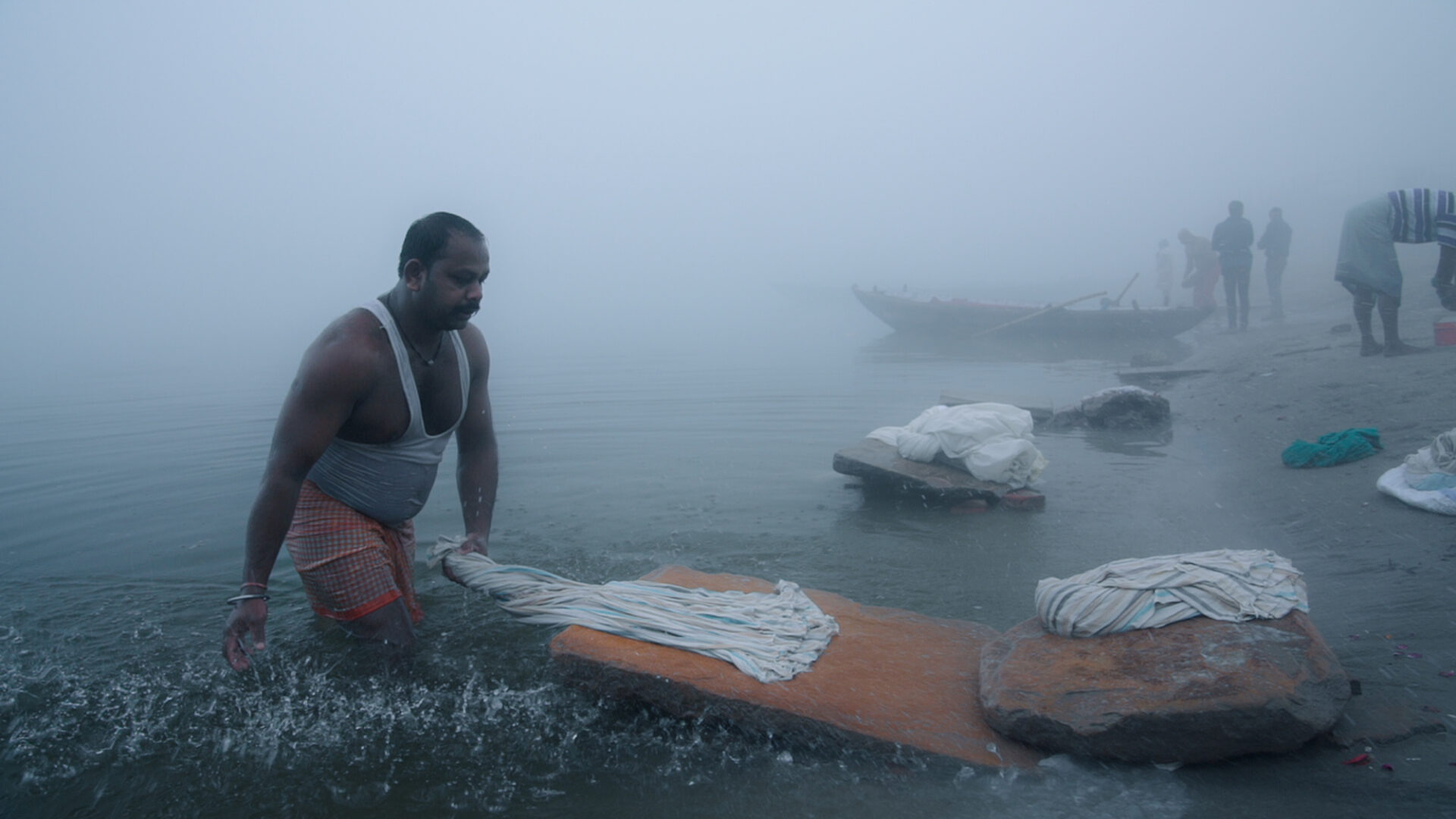
The laundry worker sweats from before sunrise.

Trembling dog.
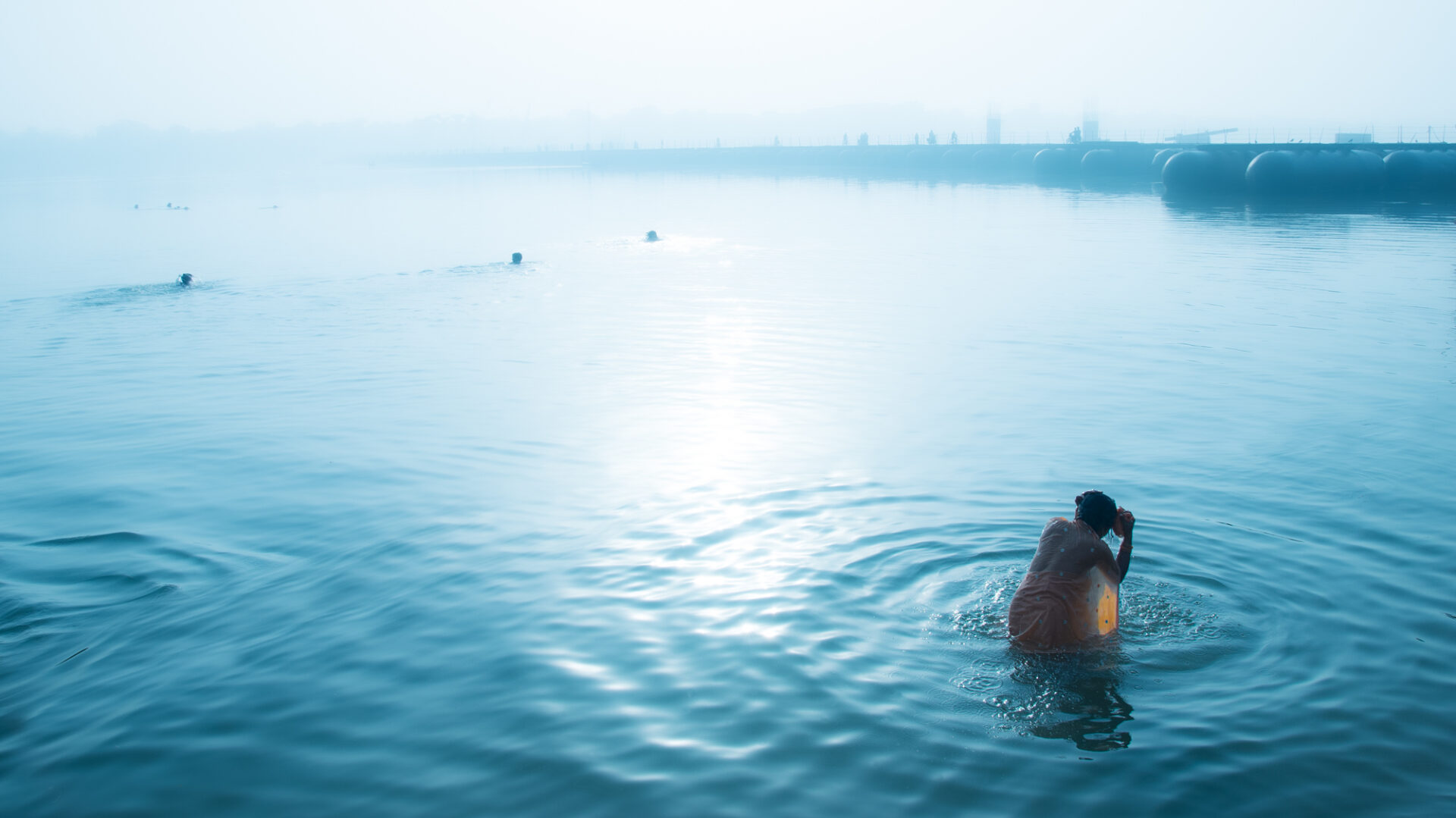
Washing hair.

A sailboat that has finished transporting firewood to Manikarnika Ghat(crematorium).

Devotees boarding a boat to cross over for ritual bathing on the opposite bank.
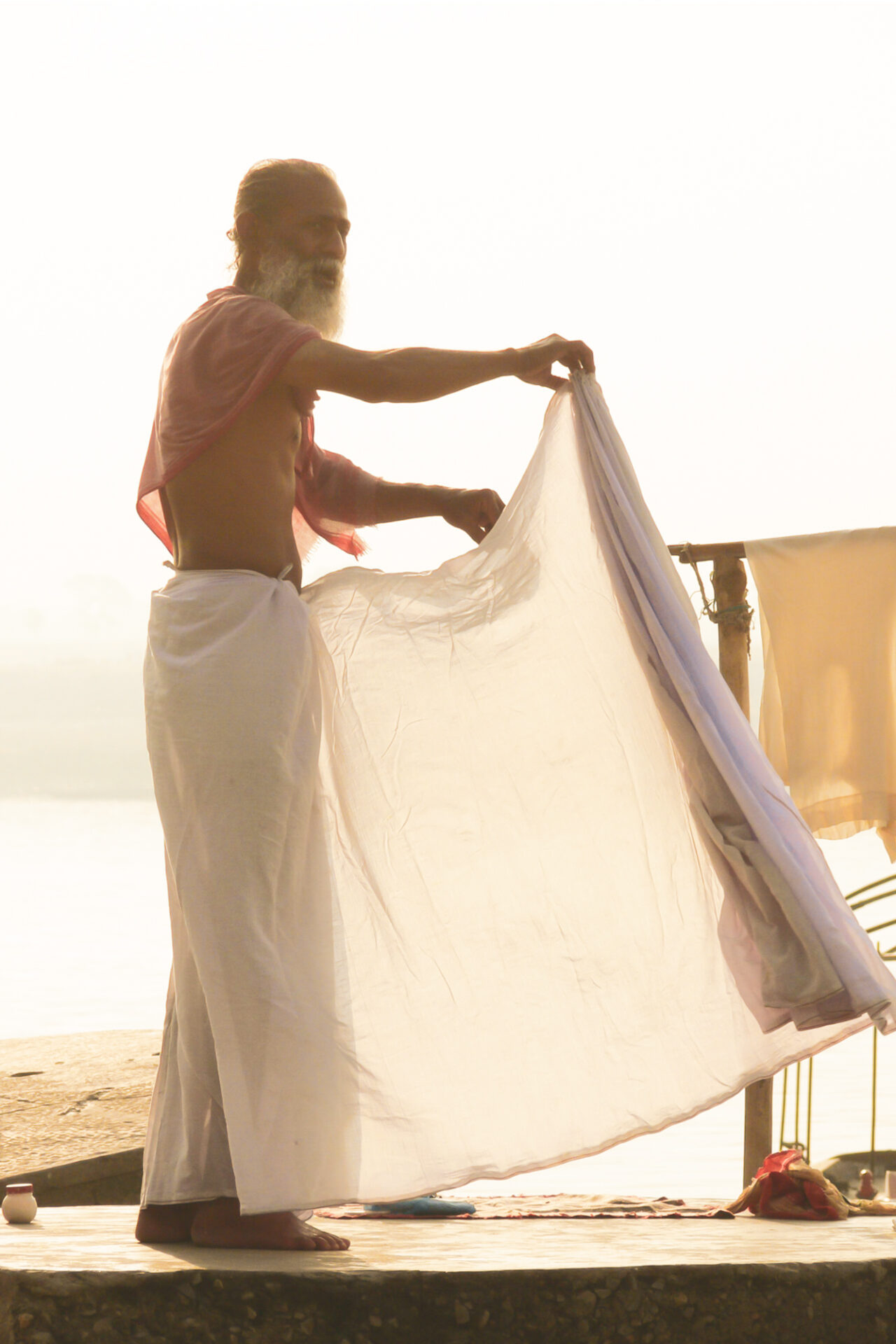
Wrapping cloth around the purified body.

With the sound of the tuk-tuk engine, the town wakes up.
In Varanasi, I always take a walk along the river before sunrise.
There is a serene atmosphere where even the faintest sounds — footsteps on the stone paths or the oars of passing boats — echo clearly through the misty air.
During the dry winter season, everything is shrouded in a soft fog, creating a dreamlike, almost otherworldly landscape.
Sitting on the cobblestones and watching the flow of the Ganges, I lose all sense of time moving toward the future.
Instead, I feel a deep, natural sense of impermanence — a moment of stillness that allows even non-Hindus to slip into a meditative state.
While the photographs I have chosen for this exhibition focus on everyday life, it is important to remember that Varanasi is, above all, a city of faith.
Morning puja, a ritual offering of gifts and prayers to the gods, offers an experience distinctly different from the more lively rituals of the night.
Hindu worshippers travel from all over India to Varanasi, seeking to bathe in the sacred river and witness these ceremonies.
One morning, as I was quietly observing a puja, a couple standing beside me asked, "Where are you from?"
Next to them was a framed photograph of a young man — their son — who had passed away from malaria the previous year.
They had journeyed all the way from southern India to Varanasi to pray for his soul, bringing his photograph with them.
The woman’s face was filled with a deep peace, and I couldn't help but wonder if she had found comfort through the puja, believing that her son had safely reached heaven.
Witnessing their unshakable faith and quiet tranquility, I realized that Varanasi must truly feel like the closest place to heaven on earth for them.
I found myself envying their unwavering devotion, as I do not have a sacred place where I can fully dedicate my heart in this world.
Silently, I prayed for their blessings.
* If you are considering a trip to India, I highly recommend visiting Varanasi.
If the opportunity arises, I would love to introduce you to the magnificent sights of Varanasi beyond the early morning scenes, through my photographs.
* I hope you enjoy viewing the photos I have taken — preferably on the largest screen possible, to fully experience the atmosphere.
There is a serene atmosphere where even the faintest sounds — footsteps on the stone paths or the oars of passing boats — echo clearly through the misty air.
During the dry winter season, everything is shrouded in a soft fog, creating a dreamlike, almost otherworldly landscape.
Sitting on the cobblestones and watching the flow of the Ganges, I lose all sense of time moving toward the future.
Instead, I feel a deep, natural sense of impermanence — a moment of stillness that allows even non-Hindus to slip into a meditative state.
While the photographs I have chosen for this exhibition focus on everyday life, it is important to remember that Varanasi is, above all, a city of faith.
Morning puja, a ritual offering of gifts and prayers to the gods, offers an experience distinctly different from the more lively rituals of the night.
Hindu worshippers travel from all over India to Varanasi, seeking to bathe in the sacred river and witness these ceremonies.
One morning, as I was quietly observing a puja, a couple standing beside me asked, "Where are you from?"
Next to them was a framed photograph of a young man — their son — who had passed away from malaria the previous year.
They had journeyed all the way from southern India to Varanasi to pray for his soul, bringing his photograph with them.
The woman’s face was filled with a deep peace, and I couldn't help but wonder if she had found comfort through the puja, believing that her son had safely reached heaven.
Witnessing their unshakable faith and quiet tranquility, I realized that Varanasi must truly feel like the closest place to heaven on earth for them.
I found myself envying their unwavering devotion, as I do not have a sacred place where I can fully dedicate my heart in this world.
Silently, I prayed for their blessings.
* If you are considering a trip to India, I highly recommend visiting Varanasi.
If the opportunity arises, I would love to introduce you to the magnificent sights of Varanasi beyond the early morning scenes, through my photographs.
* I hope you enjoy viewing the photos I have taken — preferably on the largest screen possible, to fully experience the atmosphere.
